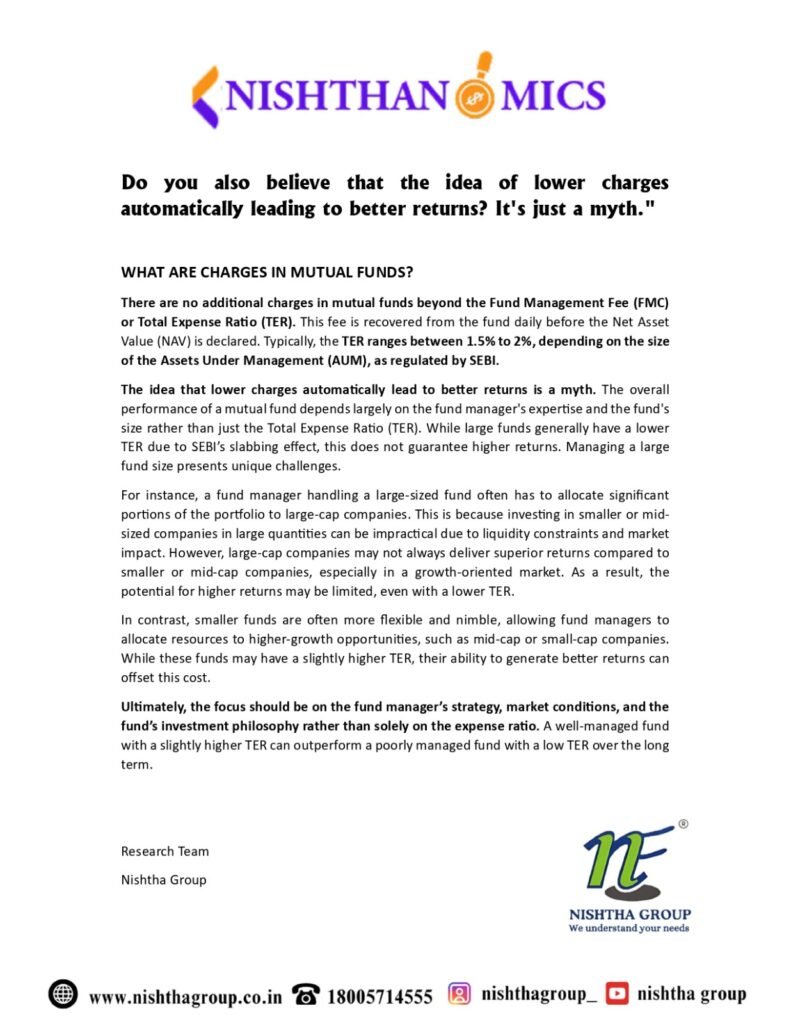
There are no additional charges in mutual funds beyond the Fund Management Fee (FMC) or Total Expense Ratio (TER). This fee is recovered from the fund daily before the Net Asset Value (NAV) is declared. Typically, the TER ranges between 1.5% to 2%, depending on the size of the Assets Under Management (AUM), as regulated by SEBI.
The idea that lower charges automatically lead to better returns is a myth. The overall performance of a mutual fund depends largely on the fund manager’s expertise and the fund’s size rather than just the Total Expense Ratio (TER). While large funds generally have a lower TER due to SEBl’s slabbing effect, this does not guarantee higher returns. Managing a large fund size presents unique challenges.
For instance, a fund manager handling a large-sized fund often has to allocate significant portions of the portfolio to large-cap companies. This is because investing in smaller or midsized companies in large quantities can be impractical due to liquidity constraints and market impact. However, large-cap companies may not always deliver superior returns compared to smaller or mid-cap companies, especially in a growth-oriented market. As a result, the potential for higher returns may be limited, even with a lower TER.
In contrast, smaller funds are often more flexible and nimble, allowing fund managers to allocate resources to higher-growth opportunities, such as mid-cap or small-cap companies.
While these funds may have a slightly higher TER, their ability to generate better returns can
In contrast, smaller funds are often more flexible and nimble, allowing fund managers to allocate resources to higher-growth opportunities, such as mid-cap or small-cap companies.
While these funds may have a slightly higher TER, their ability to generate better returns can off this cost.
Ultimately, the focus should be on the fund manager’s strategy, market conditions, and the fund’s investment philosophy rather than solely on the expense ratio. A well-managed fund with a slightly higher TER can outperform a poorly managed fund with a low TER over the long term.
